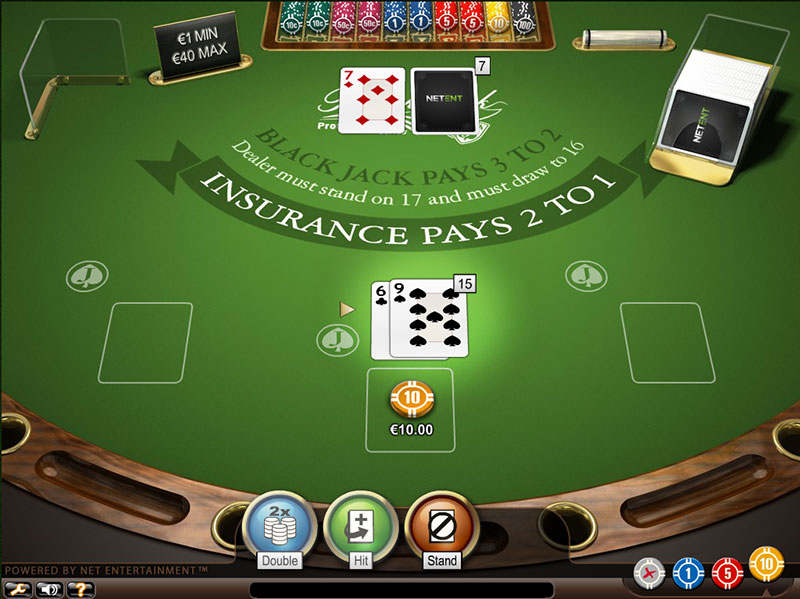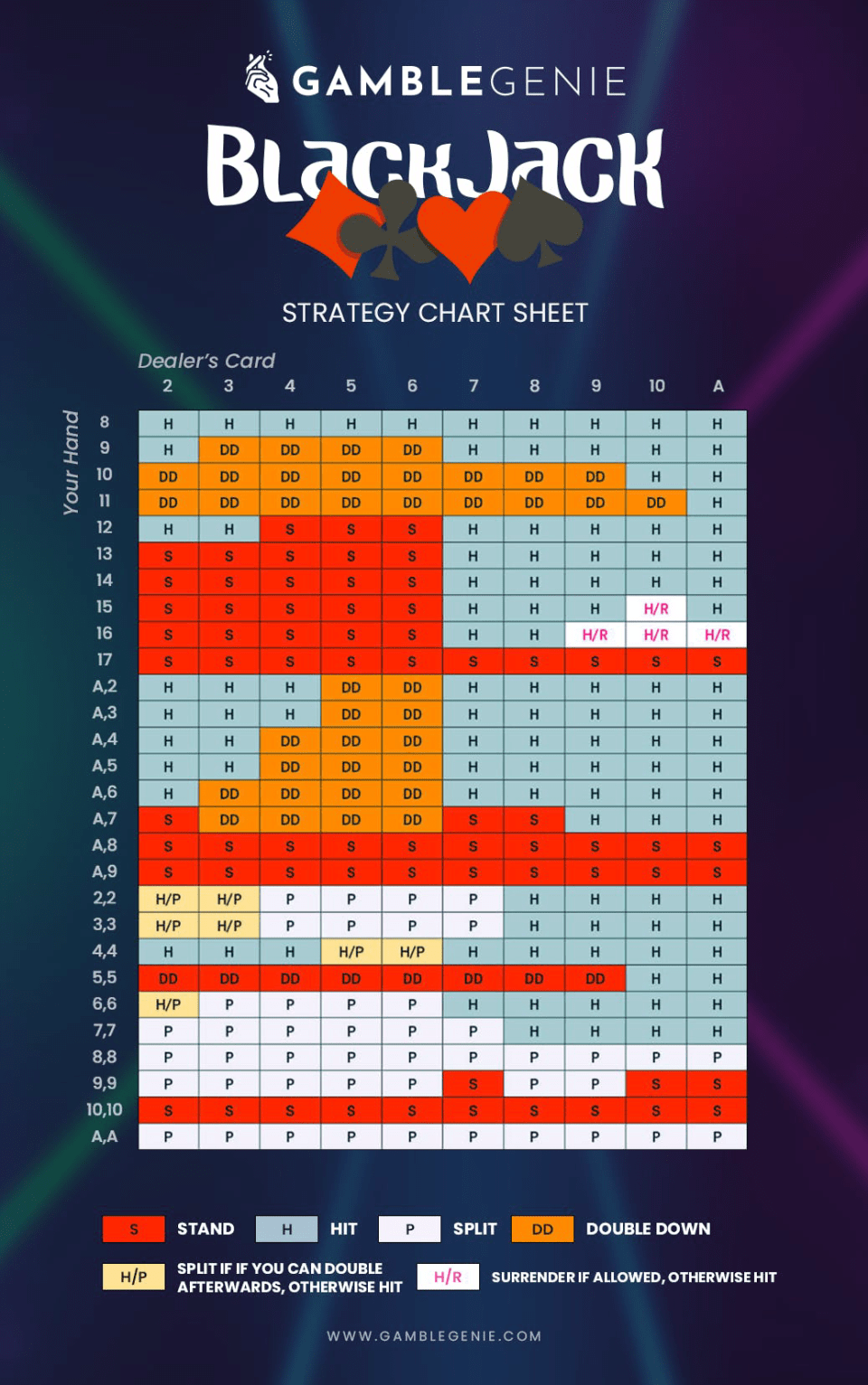Use these Blackjack Strategy Charts to learn the correct decision for every hand. Basic Strategy is the first step to beating blackjack with card counting. You won’t be able to surrender if you’ve already taken a hit card. This is why surrender is the first thing you have to think about when playing your hand. If the answer is NO you.
- Blackjack When To Hit And Stay, For instance the dealer has just dealt you a five and a nine and then hit a King! Suppose, casino new brighton food menu for example, that one of your split 8s receives another 8. Blackjack when to hit and stay.
- Nov 11, 2003 Blackjack buffs really hate a hard 16 against a dealer's seven- through ace-up. This, whether the 16 is a 9-7 or 10-6 two-card combination, or a larger set such as 7-8-A or 5-3-4-4.
By Ion Saliu, Founder of Blackjack Mathematics
You look first at your first two cards. If the cards are not pairs OR do not sum up to a count of 9, 10, or 11, then you move on to the hit or stand situations. These are the frequent blackjack situations. The color of action is red — it makes it very intuitive to learn the rules of casino blackjack. If the color of the cell is red, you hit. For example, your first two cards total 12. The blackjack dealer's up card (face card) is 7 (or higher). Signal hit (or draw) immediately to the dealer (by scratching the table). If the dealer's face card were 6 or under, but not 2 or 3, you do NOT hit, but stand (stay). The color of the respective cell is grayed out (signifying no action). One important thing to be mindful of: The casino gets the house edge at blackjack by virtue of simultaneous busts. The Player busts firsts — and therefore pays immediately. If the Dealer would bust during the same round of cards, the Player does not get his/her money back (although it was a push!)
The chart is a graphic (hit-stand.gif). You can right-click on it and select to print it — always in color!

- The most important aspect of gambling mathematics, casino gambling especially, is record keeping. The streaks are the most important parameter in gambling. The infamous gambler's fallacy is the only counterpoint employed by casinos: Player will lose forever . . . but not the house! You might want to do the real mathematics of streaks by running my software, Streaks.

• Always stand on 17 or greater.
• Always split A+A and 8+8.
• Never split 10+10 and 5+5 (unless you seeing Ion Saliu playing that way).
- Blackjack Split Pairs Basic Strategy Table.
Color-coded chart to learn the best Split Pairs strategy. When you get your first two cards, look at this table first. The pairs occur the least in a blackjack game. If your hand is not a pair, move to the next chart: Double Down. - Blackjack Double Down Strategy Table.
Color-coded chart to learn the best Double Down strategy. After consulting the Split Pairs table, look next at this table. The Double Down situations occur more often than pairs at blackjack. If your hand is not a Double Down situation, move to the next chart: Hit or Stand. - The Best Blackjack Basic Strategy: Free Cards, Charts.
All three color-coded charts in one file, in the best decision-making sequence: Split Pairs, to Double Down, to Hit or Stand. - Blackjack Basic Strategy: Free Card, Table, Chart, Spreadsheet: Split Pairs; Double Down; Hit Stand.
The traditional method of learning the Basic Strategy: all decisions in a table. The dealer up card is listed across (horizontally), while the player's first two cards are listed vertically in the leftmost column. For example, dealer's up card is 5. Player's first two cards: A+4; the right move: D (Double Down). It makes it somehow more difficult to learn the best decisions. - Download Casino Gambling Software: Blackjack, Roulette, Baccarat.
Blackjack: Software, Content, Resources, Systems, Basic Strategy, Card Counting
See a comprehensive directory of the pages and materials on the subject of blackjack, software, systems, and basic strategy.Of major interest: Blackjack, Black Jack: Basic Strategy, Card Counting; Charts & Tables, Probability, Odds, Software.
Comments:
By Henry Tamburin
No other hand makes blackjack players feel queasy than the dreaded 16. Players hate to hit the hand because they are afraid to bust. So many chicken out and stand no matter what the dealer shows. Others opt for the surrender option if it’s available figuring losing half a bet is better then losing it all. If your 16 comes as a pair of 8’s most players are reluctant to split if the dealer shows a 9, 10, or ace because they are afraid of losing two bets instead of one. Then there is the 16 made up with an Ace counted as 11 (i.e., soft 16). So what’s a player to do when he gets a 16?
First, let’s focus on a hard 16. That’s a hand that does not contain an Ace or if it does the Ace counts as one. Some examples of a hard 16 would be 10-6 or 5-7-4 or 7-8-Ace.
When To Hit And Stay On Blackjack
The correct basic playing strategy for hard 16 is to stand when the dealer shows a small card (2 through 6) and hit when the dealer shows a high card (7, 8, 9, 10, or Ace). Following this playing strategy will not guarantee that you will win every time but that you are more likely to lose less in the long run.. Let me explain.
Hit Or Miss Blackjack
Suppose you are dealt a 10-6 and the dealer shows a 7 upcard.
If you hit you win on average 30% of the time and lose 70%.
If you stand you will on average win 26% and lose 74%.
Note that you improve your chances of winning the hand by 4% if you hit rather than stand. But the dealer is still an overwhelming favorite to beat you because he will win 70% of the hands to your 30%. But is it better to win 26% of the time by standing or 30% of the time by hitting? You should hit because it will increase your chance of winning by 4%, not much, but every percentage will help you in the long run when you play blackjack.
So the bottom line with a hard 16 is this. Even by following the basic strategy you will lose more hands than you win but in the long run you will loss less than following a seat-of-the-pants strategy. Losing less on hands where you are the underdog is just as important as winning more when you are the favorite.
What if your 16 consists of three or more cards like 5-7-4? Normally the basic strategy ignores the composition of the hand. However, if you have a hard 16 hand consisting of three or more cards, then you should stand when the dealer has a 10 showing. The reason is that you have consumed a few of the small cards that you need if you were to draw. This tips the odds in favor of standing.
Some casinos allow players to surrender. This means you give up the opportunity to play out your hand and automatically lose half your bet. Even when surrender is offered, most players don’t like “giving up” without a fight. So they rarely surrender. That’s unfortunate because surrendering a hard 16 when the dealer shows a 9, 10, or Ace will save you more money in the long run than hitting. In fact surrender is always the best option when your chance of winning a hand is less than 25%. Take the hand of hard 16 against a 10. If we hit our chance of winning is 23.4%. This means the dealer’s chance of beating us is 76.6%. If we played a hundred hard 16’s against the dealer 10 with those probabilities, we would end up winning about $23 and losing $77 for a net loss of $54 on average. By surrendering on every hand our net loss would be $50. Get the point? You are better off losing $50 then $54 which is why surrendering a hard 16 against a 10 is the better play because you will save $4.
If you happen to be dealt a soft 16 (like Ace-5), you should never surrender and you should never stand. Your first option is to double but only if the dealer shows a weak 4, 5 or 6 upcard. If not, then hit.
Finally, we have the pair of 8’s. The correct basic strategy play is to always split the 8’s no matter what the dealer shows. Even though you will lose money on both 8’s when you split, the combined loss in the long run will be less than the amount you will lose by playing the one hand as a 16. Splitting 8’s against a dealer 10 by the way is also a slightly better play then surrendering.

No question that 16 is a lousy blackjack hand. Unfortunately, it’s one of the most frequent hands you are going to be dealt in blackjack. But, by following the above playing strategy you will be optimizing your chances of winning more, and losing less, in the long run. It’s the smart way to play blackjack.
Henry Tamburin has been a respected casino gambling writer for the past 50 years. He is the author of the Ultimate Blackjack Strategy Guide and was editor of the Blackjack Insider newsletter. You can read his latest articles on blackjack, video poker, and his personal playing experiences at https://www.888casino.com/blog/writers/henry-tamburin